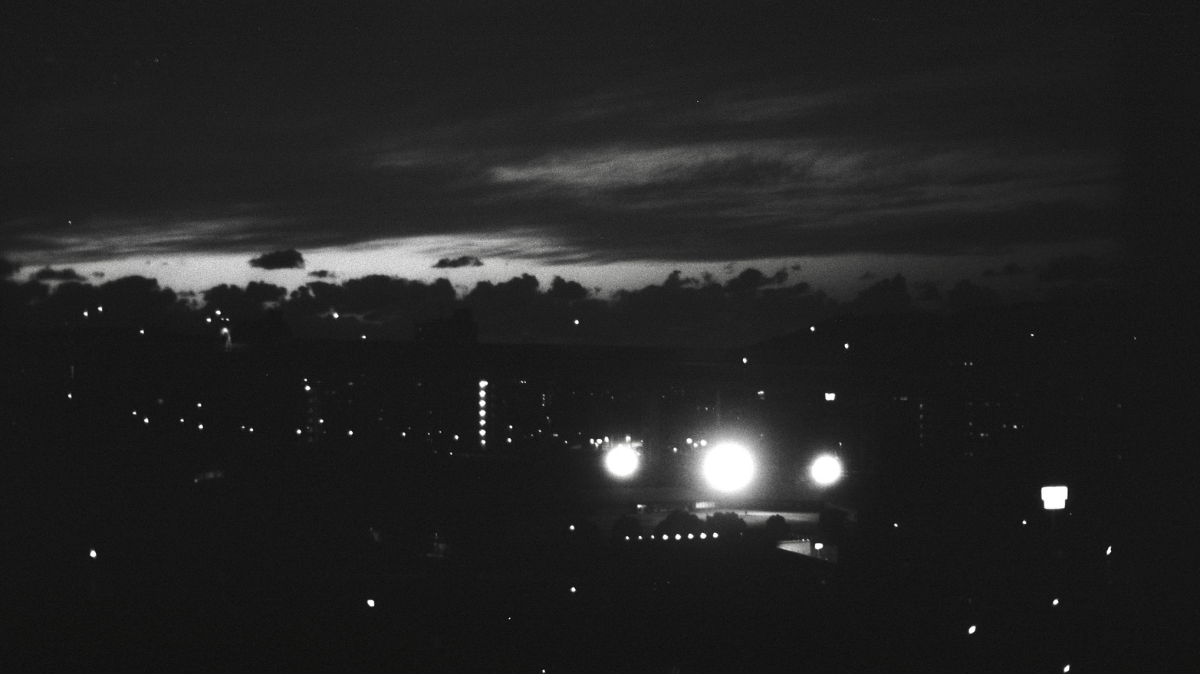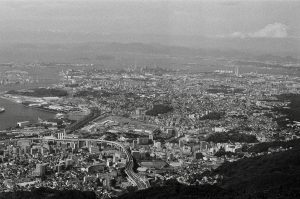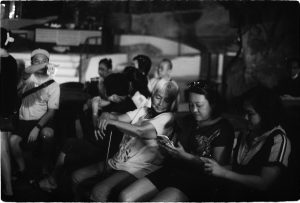NOWHERE-NOW HERE, HECTOR CASTELLS TRAVEL JOURNAL – CAPSULE III
Now Here, Kytakyushu, Japan, September 2024
Vision without action is a daydream. Action without vision is a nightmare.” —Japanese proverb.
Google Maps almost killed adventure, the possibility of being geographically lost, unless you are underwater —or in North Korea, Papua, Mongolia, the Japanese and South Korean countryside, and a vast length of Africa.
The Nippon Zen Master lives on top of the steepest slope I have ever climbed. According to Google Maps the closest Aikido dojo is half an hour away on a bus. She says that she can give me a lift. We jump on her Vintage Volkswagen and it just takes two Miles’s Davis songs to reach our destination. The building looks abandoned for Japanese standards. The NZM is about to leave before saying: “It is weird that there is no one here 15 minutes before opening time.”
I remain silent.
“It is a Japanese thing: you don’t open public spaces at the last minute,” she says now. Punctuality is some skill, big time.
“There’s a phone number in the fucked up Google Maps page,” I say untimely.
“Seriously? And you are only telling me now? Give it to me.”
She rings. The conversation sounds like an ambulance crash: all wails and sirens.
“This is the pre-pandemic dojo! They haven’t trained here ever since,” says the NZM.
I fustigate. She seems slightly agitated.
“There was this strange lady at the other end. She was emotional. It was weird. Damned martial arts! The new place is just a five-minute drive from here. I’ll give you a lift.”
I feel a wave of relief every time Google Maps fucks it up: there is hope in getting lost. We take off and spend more time waiting for the traffic lights to turn green than actually driving. Japanese junctions and Catholic churches are very much alike: you are forever waiting for the end of the hellish light, no matter if you are a pedestrian, a driver, or a communion wafer acolyte. If you want to learn about patience without becoming a junkie or engage in meditation, try Japanese crosswalks or Catholic churches. In Japan, pedestrians respect the eternal life of red lights with the exact same quiet unflappability that parishioners show before the body of Christ.
Swimming Fool
The NZM drops me in front of a large building that advertises itself as a swimming pool. I see the steamed up large windows and a lifeguard coming out. He is wearing the essential red and yellow uniform. I ask about Aikido.
He looks at me as if I just said: “I want to rape you.” I apologise. Then he does. We are both terribly sorry about something we might ignore, although after fifteen years of training, it is utterly embarrassing not to be able to convey the name of the art in the country where it was born.
We are about to say sorry and goodbye, when I spot a black belt at the entrance. They look like Pandas, and most of them share an irrepressible lure to touch up the front knot of their hakamas —aka their black belts. They keep adjusting them forever. It must be exhausting.
The lifeguard sees the self-groping Panda, understands my words in hindsight, and says that I’m looking for him. Panda rubs his belt and says hello. We don’t share any common language apart from body language. It is clear that he is inviting me in. I follow him through the insides of the pavilion. It looks like a spaceship rather than a dojo —or a swimming pool.
I’m still limping and the Panda notices it. We engage in an onomatopoeic routine. I reckon he is saying that I’m allowed to stop practicing if my knee hurts. I agree with a smile and we both get on the tatami, the largest and cleanest I have ever seen. The founder’s portrait shines further away like an electric orchid.
There are five Pandas and one white belt warming up. The white belt destroys the protocol —only Senseis are supposed to greet newcomers or talk.
“Hello, I’m 78 years old and a Catholic. Are you?”
I shake my head. He seems horrified.
He has a Nikon F1 hanging off his neck and identifies my Minolta swiftly. I say yes, it is a film camera, and he shoots me in the face. I say that I love taking photos but not being in them. He shoots me again. I make the awkward X sign with my arms, and his eyebrows seem to jump off his face. I say “don’t worry, but don’t SHOOT ME: I came to practice Aikido.”
He bows and keeps taking photos of the Pandas, the wettest dream of sport photography. They love being shot anytime anywhere, although nothing pleases them more than doing it at the end of the class, when covered in sweat.
Orphan Senseis
Sensei is nowhere to be seen. The five Panda are taking turns to demonstrate each technique in a way that makes all of them Senseis. However, once they are done demonstrating, they sit down and check their phones or engage in random conversations with the rest of the students. They are literally shitting on the first commandment of the founder’s book, which claims that training must never be interrupted or deserted —let alone chit the fuck chat.
My first Nippon dojo becomes the most anarchic I have ever been since Addis Ababa and Mendoza, which coincidentally are the only Sensei orphan dojos I have encountered in over a decade of mapping them worldwide.
The white-belt removes his Nikon and asks me to practice. After completing the first movement, he starts telling me the story of how the Catholic faith saved the life of his firstborn. I extend my arms towards the sky and express the universal shushing sign shamelessly. Only then the first Panda comes to the rescue. “What’s wrong?” “Everything.” He orders me to sit down, checks my fucked knee and starts massaging it.
“Are you the Sensei?”
White-belt says: “no he isn’t, but he is a physiotherapist.” I feel a shiver. He strokes my leg until reaching my upper thigh. I’m releasing a howl of pleasure, when a family walks in: mother, two daughters and an undisclosed male teenager.
The white-belt and fake Senseis get on their feet in the brink of an eye and form a perfect line. Each one of them greets the family members with increasingly dramatic bows. I join the queue and emulate the protocol. The second daughter looks at me. She smiles and then starts crying. I say everything is going to be alright, which is what you say when you don’t know what you are talking about.
Next thing she rubs her tears and asks if she can take a photo of me. I’m about to make the X with my arms, when white-belt approaches from behind and says: “Our Sensei is dying in Hospital. She is the first daughter of the future widow: do as she says.” I feel a lump in my belly, eyes, nose and arsehole.
The Departed
“The future widow.” That is some way to put it.
The teenager, aka the younger future orphan, takes out his phone as if I have also granted him permission. Then sisters and mother follow, and all of a sudden the three of them are shelling me with their devices. They get excited. I’m about to shout STOP when they ask me to demonstrate a technique, which instantly turns me into bastard-orphan-Sensei-number-six.
I feel like the waiter in Goodfellas. My knee becomes a young ballerina, and I spend the next ten minutes shitting on the founder’s Tenth Commandment: “Only Senseis demonstrate.”
As I finish, the future widow gets a text message and falls to her knees.
We form a circle and hold hands. The silence is prodigal, the farewell just quiet and extremely moving, until we heard the click of a shooter. Someone points at the sky, which is actually the ceiling. There is a green light.
Rest in Rainbows, Almighty & Unknown Sensei of Anarchy.




